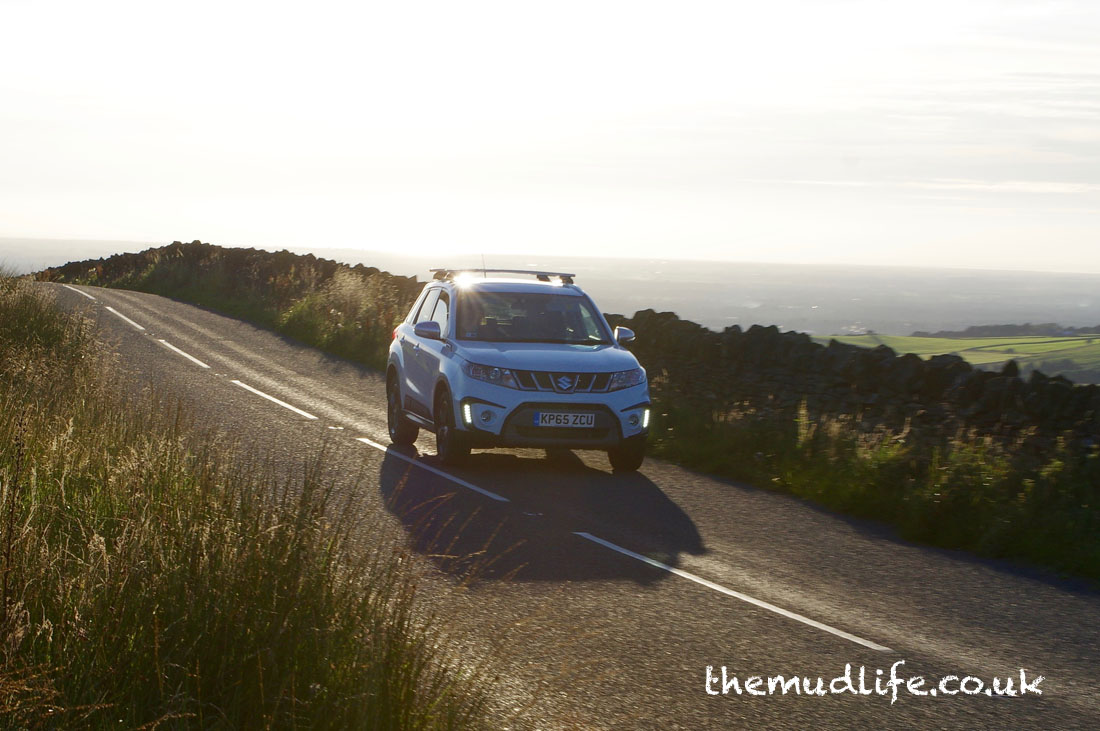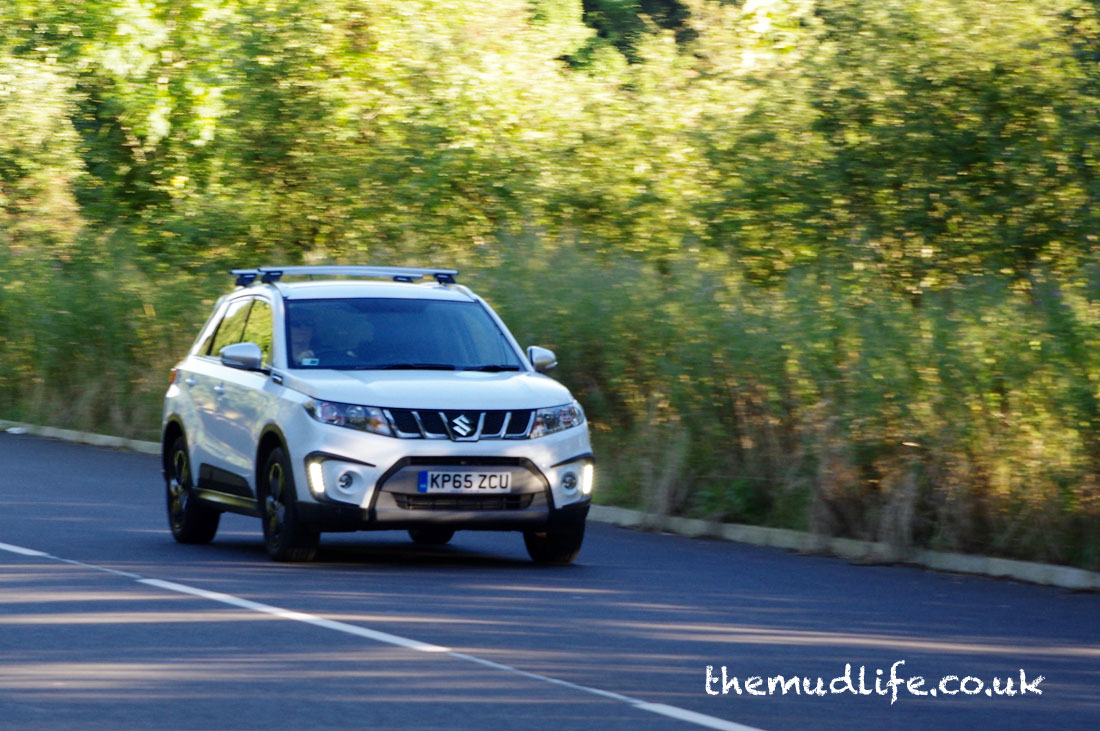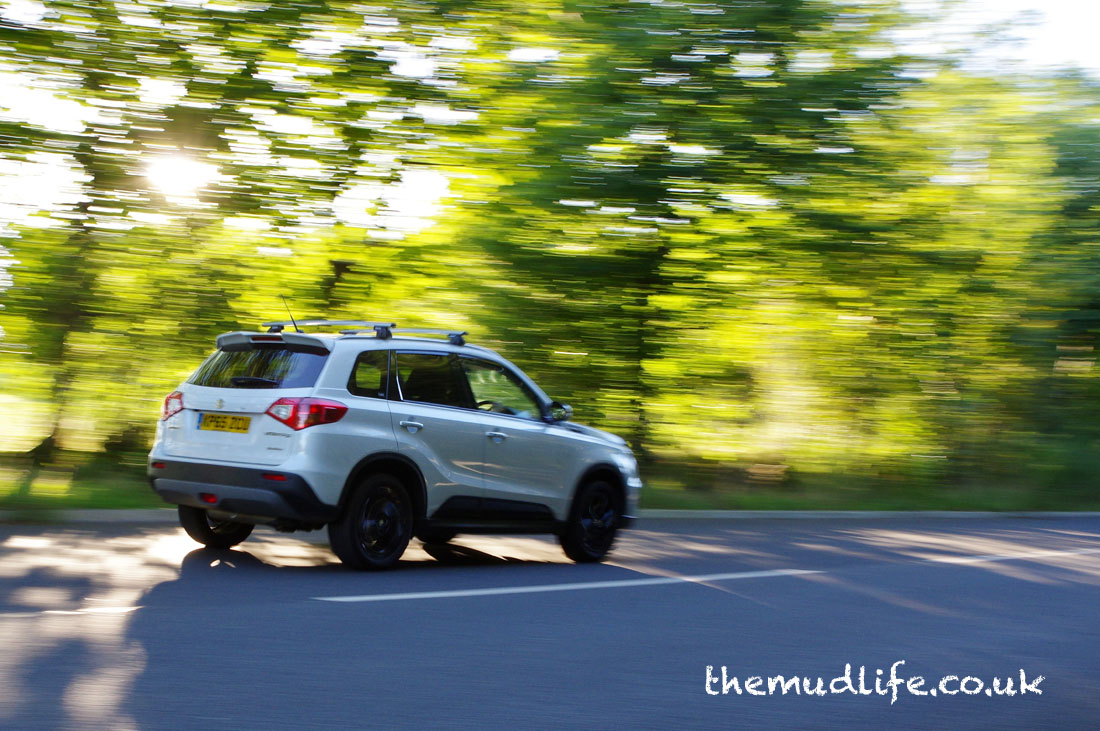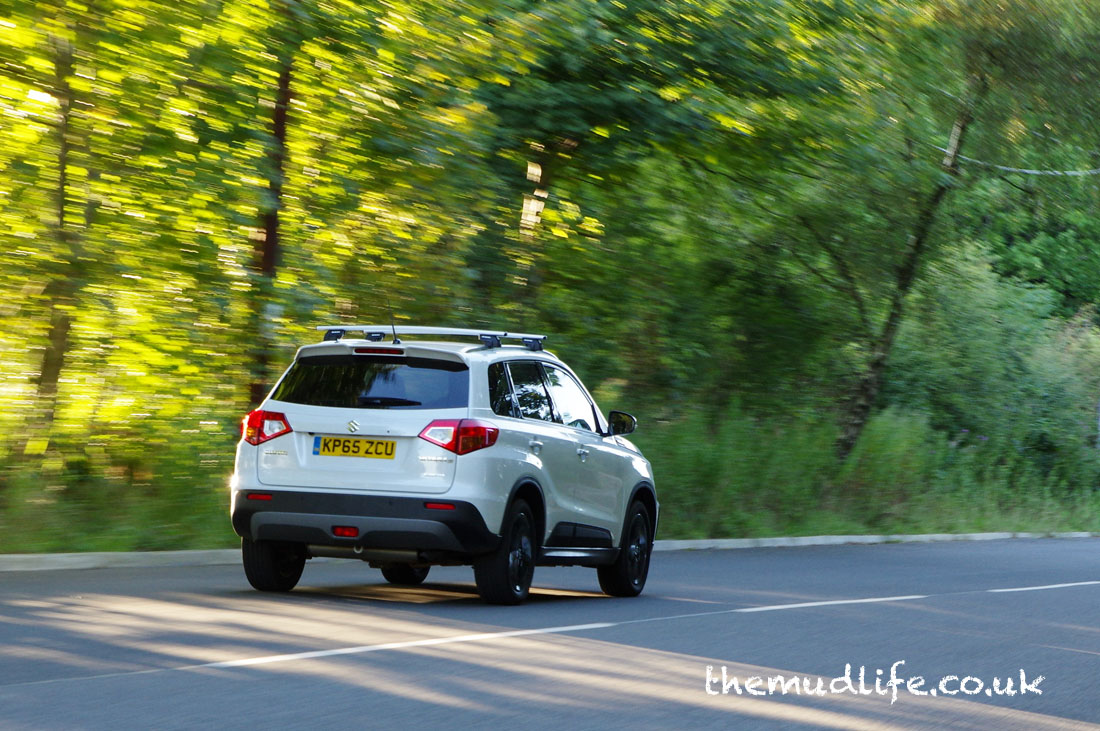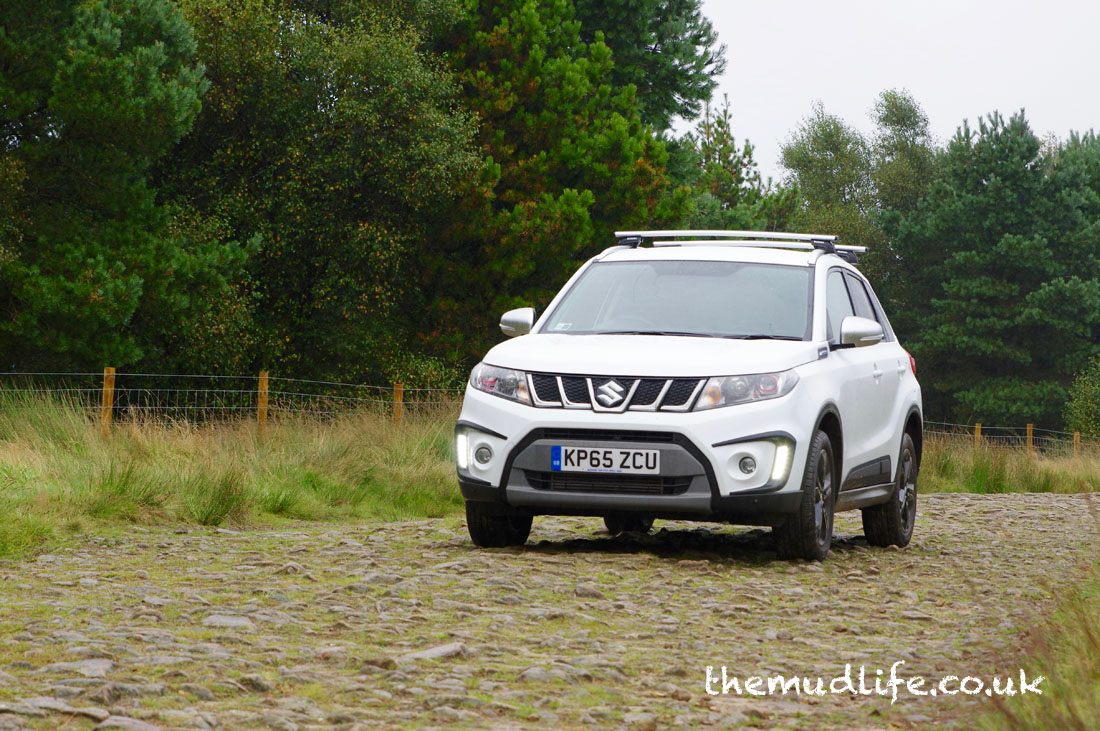Suzuki Vitara S
What is it?
I’ll tell you what it is, (warning, spoiler alert) it’s one of the most fun, practical and value for money 4x4s that I’ve driven, that’s what it is!
Ever since its market launch in 1988, the Suzuki Vitara series has earned high acclaim, it was compact, easy to drive and had good on-road performance and genuine off-road capability. Then, a couple of years ago Suzuki got rid of their superb Grand Vitara (click here to read our review) and replaced it with, in my opinion at the time, a softer, more trendy version. It didn’t have a low box, neither did it have the same ground clearance or internal space as the long wheel base Grand Vitara did, I was in mourning, how could they?
Of course we can blame Europe for its demise, but after a quick drive around the Millbrook testing facility in the new model, it really caught my attention - click link. But, it wasn't until Suzuki invited me to Croft Racing Circuit less than 12 months after its introduction for the launch of the Vitara S with their new Boosterjet 1.4 petrol engine - click link - was I really hooked.
Why? Read on my friends, read on…
On the road
With 138bhp from its Direct Injection Turbocharged 1.4 Boosterjet engine, the ’S’ is no slouch and provides a more sporting and dynamic character to the Vitara line up. Not only that, add the 6-speed manual gearbox and it’ll return over 52mpg with a CO2 emissions of 127g/km, if that’s important to you.
The 2 previous times that I’d driven the Vitara S were at an SMMT day and on a Suzuki press day at Croft Racing Circuit were they wanted to show off both the Boosterjet and ALLGRIP technologies. On both occasions it put a smile on my face!
With a 0-60mph time of 10.2 seconds it may not be the quickest 4x4 out there, but it feels a whole lot quicker and you can have a lot of fun on twisty country roads where the ALLGRIP system help with slippery corners. It also picks up far quicker than the old petrol 1.6ltr and overtaking is much easier, and safer. Then of course, when you turn the dial over to Sport mode, things get even better!
As you will notice from a couple of the photos at the end, we loaded Winona onto the roof bars and went for a jaunt to Llyn Padarn, North Wales, and apart from a quick stop to make sure that everything was still secure, the Vitara S made light work of it.
Off the road
Admittedly, I didn’t venture far off the beaten track in the Vitara. It wasn’t because I was afraid of getting it dirty or damaging it, it was just that we had a particularly busy week driving here, there and everywhere. The ‘off-roading’ I did managed was quite tame, having said that, I did get the Vitara S balancing on its 2 opposing wheels and it drove away without hesitation, and that was without using any of the 4x4 buttons down next to the handbrake.
Like all AWD Suzukis, the ALLGRIP system works a treat with its Four-mode ALLGRIP system.
- Auto - The auto mode prioritises fuel economy in typical driving conditions and uses two-wheel drive by default. It switches to four wheel drive if it detects wheel spin.
- Sport - The sport mode is optimal for twisty roads. The system makes maximal use of four-wheel drive in accordance with accelerator inputs. At low and mid-range engine speeds, the system alters the accelerator/torque characteristics to optimise engine response and cornering performance.
- Snow - The snow mode is optimal for snowy, unpaved, and other slippery surfaces. The system uses four-wheel drive by default. It optimises four-wheel drive control in accordance with steering and accelerator inputs to promote traction and stability on low friction surfaces.
- Lock - The lock mode is for extricating the car from snow, mud, or sand. A limited slip differential is fitted which helps brake any slipping wheel and transfer torque to the gripping wheels. The system distributes high torque to the rear wheels continually.
Because Auto switches to four wheel drive if it detects wheel spin anyway, I didn’t bother switching it to any of the modes in any of the situations you can see below, I left it in Auto and let the car figure it all out, which it did without hesitation. I can only imagine that you have to be in dire straits to need Lock.
On conventional full time 4WD vehicles, feedback control allocates torque to the rear wheels after detecting front wheel drive slippage. On the Vitara, as well as offering feedback control it also offers feed forward control that anticipates slippage based on road surface, throttle opening position, steering angle and other factors. Therefore, rather than reacting after grip is lost, it controls the vehicle to prevent grip from being lost which results in greater stability.
Hill Descent Control is fitted as standard on S and SZ5 ALLGRIP models. When the vehicle is travelling down a steep downward slope and engine braking is not sufficient to slow the vehicle, Hill Descent Control will automatically apply the brakes to restrict vehicle speed, thus allowing the driver to maintain full control and concentrate on steering the car safely.
Interior
Before I perhaps give you all the wrong impression, I want to say that sitting inside the Vitara is a lovely place to be and I would be happy to drive pretty much anywhere in it. Not only is the dash layout sensible and pleasing, but the seats are generous, comfy and supportive, pretty much like any another Suzuki.
What you have to bear in mind is that the interior is built to a spec, you’re not going to find walnut capping nor an Italian leather stitched dashboard - it’s plastic. It isn’t offensive plastic, and to be honest you don’t even notice it, I mean, I’ve driven Range Rovers, Rollers and Bentleys in the past and I’ve never stopped at a set of lights and gently caressed the veneer or sniffed the leather wrapped dashboard - never, honestly.
In the back you have a huge amount of space, and with the rear seats folded down you could actually lose a small child in there for weeks. As I mentioned earlier, during our week together we packed the Zook for a trip to North Wales for a spot of canoeing and BBQ’ing, Llyn padarn to be precise, and you can read about it here. With the rear seats folded we got all the BBQ kit, food, extra clothing, 2 small tables, 2 deck chairs, boots, wellies and other bits and bobs. I’m convinced we could have managed with the seats up, but we had 4 paddles to fit in diagonally.
Engines 'n' transmissions
With the standard Vitara, most of which are font-wheel drive, you have the choice of a 1.6ltr petrol or 1.6ltr diesel whilst the 1.4ltr Boosterjet is saved for the Vitara S - all of which are available with the manual or automatic gearbox.
1.4ltr Petrol Boosterjet (turbocharged)
6-Speed Manual ALLGRIP
137bhp - 124mph - 0-62mph in 10.2 seconds - 52.3 combined mpg - CO2 g/km 127
Conclusion
I know I’ve droned on about the 1.4ltr Boosterjet engine, but I found that it makes the Vitara S so much more fun to drive, and it’s a shame that Suzuki have no plans to make it an option in lower spec models.
As ever, Suzuki throw plenty of kit as standard on the S, you get a tyre pressure monitoring system, sat-nav, Bluetooth, a reversing camera, adaptive cruise control, air conditioning, a DAB radio and LED headlamps. From the outside you’ll be able to tell it apart from lesser Vitaras by the 17-inch black alloy wheels, unique front grille and wheel arch extensions.
Well, I reckon you’ve figured out by now that I would happily have a Vitara S parked outside Muddy Towers if I had the spare cash, it offers great value for money in a smart and exiting package.
The Vitara range started from just £14,999 whilst the Vitara S starts from £22,249
Website: www.SuzukiCars

